Change is occurring in society and business at an ever-accelerating pace. How can the physical world of real estate adapt to an ever-shifting virtual world of bits and bytes? Forces disrupting real estate, including demographic polarization, digitization, globalization, urbanization and socialization, and other trends, will reshape our built environment and landscape in the near term, forging real estate’s future.
Emerging technologies and subsequent disruption will impact the entire real estate panorama, requiring a reimagining and reinvention of construction, the built ecosystem, and society and culture as a whole. Today, the only constant is change, be it technologies, financial capital, human talent or new rules. But now more than ever, it is about the pace of change.
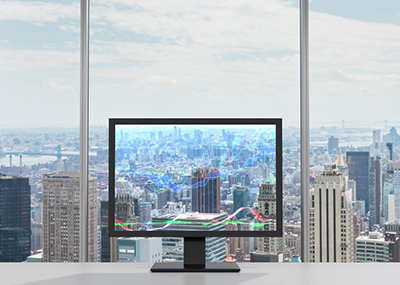 Demographic Polarization
Demographic Polarization
The two largest generations in history, the millennials and the boomers, ironically, have much in common. The competition between these groups for spaces in which to work, live and play in the near term will change housing, office and retail for decades to come. Millennials: Millennials, those ranging from their late teens to their mid-thirties, are now the largest generation in the U.S. Labor Force1 and possibly the most misperceived. While college debt and high housing prices have resulted in a “boomerang” generation that has returned to live with parents, not all millennials are underemployed and many are hard workers. Only 5 percent of U.S. millennials living in the family home plan to stay there, according to a CBRE report.2

Millennials grew up with technology, and it has shaped their relationships with physical space. They are cashless consumers and prefer to pay bills online. They demand efficiency in their transactions, with self-checkouts a priority. The result is changing retail configurations. “Whether through their use of apps or their expectations around the omnichannel experience, [millennials] will drive the future of retail.”3 Perhaps because technology can be isolating, millennials are also highly collaborative and desire their surroundings and possessions customized. They are not enamored with cookie-cutter belongings, homes or workspaces. They demand that their workplaces be fully wired and prefer “Live Work Play” environments to reduce commuting time and costs. Sixty-two percent of surveyed millennials prefer to live in mixed-use environments4 and are concerned about sustainability. They do not want to drive or own cars. This change has enormous implications for future parking allocations and urban construction.
Boomers: Boomers, those ranging from the youngest at 51 to the eldest at 70, are returning to cities in search of experiences, community and smaller, low-maintenance homes where they can grow old comfortably. While many will purchase apartments, others will rent, competing with millennials for multifamily housing. Boomers demand experiences and are less inclined to shop than other consumers. Retailers will need to shrink their footprint, reconfigure store layouts and signage for an aging generation, and reflect the fact that millennials do more shopping online.
In the near term, technology will enable boomers to age in place longer, with robotics, wearables and Smart Homes that will assist with mobility, tasks, and communication.5 This enabling technology will make it possible for boomers and millennials to live, and to some extent work, side by side. Competition for space will drive up demand and thus prices for apartments and condos in urban areas and mixed-use complexes that recreate the city lifestyle. Developments will include more public spaces for socializing. Infrastructure will have to accommodate public transit, ride-sharing services (and soon driverless cars) for younger residents who do not wish to own a car and for older residents who may not be able to drive safely. Longer term, boomers will eventually be the largest group of over 90s in history (at more than 7.6 million) 6, which will mean a greater need for assisted living communities and closer proximity to medical facilities.
Digitization
‘When people talk about the future of technology, especially artificial intelligence, they very often have the common dystopian Hollywood-movie model of us versus the machines. My view is that we will use these tools as we’ve used all other tools — to broaden our reach. And in this case, we’ll be extending the most important attribute we have, which is our intelligence.’ — Ray Kurzweil

Technological advances have already changed how we shop and are poised to change how and where we live. Technology will accelerate how properties in all categories are leased and financed. With the rise of e-commerce, physical retailers are embracing the digital, even as Internet retailers experiment with brick-and-mortar stores. The retail experience is being reinvented. Amazon already has an urban campus in Seattle that defines the city, and now Amazon Go, a grocery concept from the e-commerce giant, is testing cashier-free shopping.
Click and collect, by which shoppers order online for pick-up at a physical store, is blurring the store/warehouse definition and altering percentage rent negotiations as landlord and tenant debate credits for in-store returns of online purchases. With younger shoppers expecting near immediate delivery, online retailers have boosted warehouse space in and close to city centers to accommodate consumer expectations. Not just drones and last-mile delivery facilities are boosting interest in warehouse properties, but now there is a new retail category competing for space – medical marijuana, the sale of which is now legal is some states. As a result, the industrial sector, long neglected by foreign investors, is attracting interest.7
Smart Cities and Internet of Things (IoT) technology enable cities to use resources more intelligently and efficiently. For example, Intel and the City of San Jose are collaborating on the “Green Vision” initiative, installing a network of air quality, sound and microclimate sensors to create a sustainability lens for the city and allow management to drive improvements.8 Chicago has an Array of Things (AoT), a network of interactive, modular sensor boxes installed around the city to collect real-time data on the environment, infrastructure, and activity. The ultimate goal is to measure the city in sufficient detail to enable scientists, policymakers and residents make Chicago healthier, more livable and efficient. In terms of data gathering, New York has one of the most “open” city data-sharing systems. Y Combinator, the Silicon Valley startup accelerator, recently launched “New Cities.” The famous startup incubator helped launch companies like Dropbox and Airbnb, and now is focusing on an ambitious project of its own. The “New Cities” initiative will study freshly minted cities, and how to plan, design and build them from scratch. As part of its “Array of Things” initiative, the City of Chicago is having sensors installed on municipal light poles to capture air quality, sound levels, temperature, water levels and traffic patterns.9 Sidewalk Labs (a division of Google parent Alphabet) is proposing giant new districts of housing, offices and retail space within existing cities that will incorporate all of the above.10
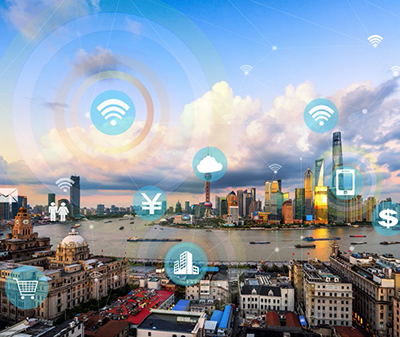 These same shifts can be seen in other sectors and are likely to accelerate. In the office sector, high-tech connectivity and cloud computing is now expected, especially by millennials. Two in five millennials would quit their jobs because of poor workplace technology, and 55 percent of workers over 35 years old indicated they prefer high-tech perks, such as augmented/virtual reality (AR/VR) and Internet of Things technologies to low-tech perks like free food. In the long term, office space will become a “tech-enabled, connected and data harnessing” service provider of digital insights, rather than mere physical space.12 Companies are investing billions in robotics and AI (artificial intelligence is the ability for a machine to solve problems by learning over time) and the synergistic emerging technologies of AR and VR (AR is the ability to enhance or augment a person’s reality, and VR is intended to give an entirely different reality.13) Through virtual reality, investors will be able to preview sites on a computer screen, while augmented reality may provide them with enhanced information about the site such as appraisals, tax assessments, the market, and much more. While both require the user to wear glasses, AR projects images through holograms, for example, while VR blocks the user from seeing what is present. Virtual reality already allows 3D presentations of spaces before construction, and it can create shopping experiences that reduce the need for traditional stores. Los Angeles-based Daqri has created a Smart Helmet that enables facilities and industrial engineers to use contextually aware augmented reality to transfer complex maintenance and repair tasks “hands free” via helmet visors and built-in audio.14 Ikea the multinational group headquartered in the Netherlands, that designs and sells ready-to-assemble furniture, allows the user to augment their view of their furniture design and layout prior to purchasing.
These same shifts can be seen in other sectors and are likely to accelerate. In the office sector, high-tech connectivity and cloud computing is now expected, especially by millennials. Two in five millennials would quit their jobs because of poor workplace technology, and 55 percent of workers over 35 years old indicated they prefer high-tech perks, such as augmented/virtual reality (AR/VR) and Internet of Things technologies to low-tech perks like free food. In the long term, office space will become a “tech-enabled, connected and data harnessing” service provider of digital insights, rather than mere physical space.12 Companies are investing billions in robotics and AI (artificial intelligence is the ability for a machine to solve problems by learning over time) and the synergistic emerging technologies of AR and VR (AR is the ability to enhance or augment a person’s reality, and VR is intended to give an entirely different reality.13) Through virtual reality, investors will be able to preview sites on a computer screen, while augmented reality may provide them with enhanced information about the site such as appraisals, tax assessments, the market, and much more. While both require the user to wear glasses, AR projects images through holograms, for example, while VR blocks the user from seeing what is present. Virtual reality already allows 3D presentations of spaces before construction, and it can create shopping experiences that reduce the need for traditional stores. Los Angeles-based Daqri has created a Smart Helmet that enables facilities and industrial engineers to use contextually aware augmented reality to transfer complex maintenance and repair tasks “hands free” via helmet visors and built-in audio.14 Ikea the multinational group headquartered in the Netherlands, that designs and sells ready-to-assemble furniture, allows the user to augment their view of their furniture design and layout prior to purchasing.
 While tangible models exist in one, two and three dimensions, we are now entering generation 4D, where the fourth dimension, in time, allows objects to be printed and self-transform their shape and material property when subjected to energy. We are already seeing this futuristic feat underway in the world’s first rotating skyscraper, The Dynamic Tower, designed by world-renowned architect David Fisher and planned in Dubai for 2020. The residential architecture will be revolutionized – and revolving. This unique building is paving the way in a new era of architecture
While tangible models exist in one, two and three dimensions, we are now entering generation 4D, where the fourth dimension, in time, allows objects to be printed and self-transform their shape and material property when subjected to energy. We are already seeing this futuristic feat underway in the world’s first rotating skyscraper, The Dynamic Tower, designed by world-renowned architect David Fisher and planned in Dubai for 2020. The residential architecture will be revolutionized – and revolving. This unique building is paving the way in a new era of architecture
that challenges our assumptions of physical space and pushes the limit on how we may live in the future. Each apartment will be able to rotate 360 degrees independently, creating a shimmering effect on the façade of this 4D structure. Each resident, thus, will have a spectacular and ever-changing customized view. In addition, the apartments will have no electricity costs, as wind turbines between each story will power the building. Not only will this be the world’s first prefabricated modular skyscraper, but its impact on the skyline, design, pricing and entire future of real estate can only be imagined.
And by 2030, artificial intelligence, and the transition to machine superintelligence, will supplement human work using sensors and image recognition.15 We will enter an accelerated work environment of algorithm-based decisionmaking. Speed, resiliency, and productivity will force the digital ecosystem to adapt and evolve.
Technology also will benefit property managers, homeowners, and the environment, as it can track energy usage. (Buildings consume about 39 percent of CO2 emissions and consume 70 percent of U.S. electricity load.16) Even the configuration of office buildings, both suburban and urban, may shift due to the advent of the autonomous and the driverless car. The terms autonomous car and driverless car are often used interchangeably. The former, autonomous car, is a traditional car with a driver that has evolved to the point where the driver need not take the wheel. Sensors and vehicle guidance systems allow the vehicle to go beyond automated speed etc. But the driver is presumed to remain at the wheel and take control if necessary. A driverless car, on the other hand, goes one step further. It may not have a steering wheel at all; it simply takes passengers where they want to go, without any need for a driver. It is anticipated that the evolutionary (autonomous) and revolutionary (self-driving) car paths are expected to converge.
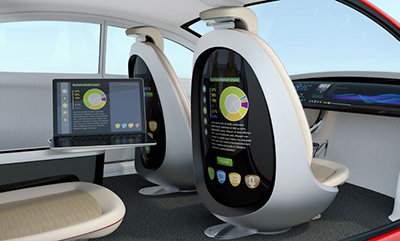 Disruption of the automobile industry will occur as car sharing merges with the technology of driverless cars. The footprint and development of parking garages may be greatly reduced, while autonomous vehicles could help revitalize suburban areas as the regions become more accessible to non-drivers and lower the premiums placed on the transit-oriented real estate. Autonomous trucks may reduce the number, increase the size, and change the location and hours of distribution centers and logistics facilities as they reduce shipping costs.17 Technology may accelerate the financing and leasing processes. Crowdfunding makes it possible for the general public to invest directly in the sector, enlarging the pool of potential investors in both commercial and residential real estate. As an online ledger and currency, respectively, Blockchain and Bitcoin could greatly reduce resource needs in brokerage and escrow companies.18 In fact, Blockchain has the potential to speed real estate transactions and make them more transparent, reduce fraud, and assist in correcting recording errors etc. As a virtual currency, Bitcoin can create more secure escrows. Smart contracts can restructure agreements, perhaps even reduce the need for legal oversight.
Disruption of the automobile industry will occur as car sharing merges with the technology of driverless cars. The footprint and development of parking garages may be greatly reduced, while autonomous vehicles could help revitalize suburban areas as the regions become more accessible to non-drivers and lower the premiums placed on the transit-oriented real estate. Autonomous trucks may reduce the number, increase the size, and change the location and hours of distribution centers and logistics facilities as they reduce shipping costs.17 Technology may accelerate the financing and leasing processes. Crowdfunding makes it possible for the general public to invest directly in the sector, enlarging the pool of potential investors in both commercial and residential real estate. As an online ledger and currency, respectively, Blockchain and Bitcoin could greatly reduce resource needs in brokerage and escrow companies.18 In fact, Blockchain has the potential to speed real estate transactions and make them more transparent, reduce fraud, and assist in correcting recording errors etc. As a virtual currency, Bitcoin can create more secure escrows. Smart contracts can restructure agreements, perhaps even reduce the need for legal oversight.
“Blockchain may enable every property to have a corresponding digital address that contains occupancy, finance, legal, building performance, and physical attributes that convey perpetually and maintains all historical transactions. Additionally, the data will be
immediately available online and correlatable across all properties. The speed to transact will be shortened from days/weeks/months to minutes or seconds,” according to technology executive Jason Ray.19
Globalization
Is the commercial real estate market a global one? It’s not quite there yet, but increasingly residents, corporations, and investors are crossing oceans and their experiences are becoming more intertwined. Immigrants to the United States are largely millennials20 as they attend school and stay or come in search of job opportunities. Unlike immigrants in centuries past, these newcomers remain in touch with family members and business associates, and technology continues to accelerate the globalization trend. The web-connected world has opened new sources of information and eased the flow of data and money around the world. U.S. commercial real estate has been a beneficiary.
 With data easily accessible online, it should not be surprising the world’s ten most transparent markets account for 75 percent of global direct investment into commercial real estate, according to JLL.21 “The United Kingdom, Australia, Canada and the United States hold the top positions and are taking real estate transparency to a new level, making improvements that go beyond other transparent markets, particularly in the granularity, quality, frequency and geographical spread of performance measurement, valuations and market fundamentals data, which now also extend to niche property sectors,” the report says.22 Simultaneously, high net worth individuals and developers from overseas, and sovereign wealth funds are seeking stable foreign investments, and the volatility of the oil markets has generated interest in commercial real estate globally, especially in the United States. Foreign investors were involved in direct property purchases totaling $91.1 billion in 2015, 17 percent of all deal volume that year.23 This was an increase from an average of 10 percent for the previous four years, according to Real Capital Analytics. 24 While Canada remains the top source of investors, funding coming from Asia has risen significantly.
With data easily accessible online, it should not be surprising the world’s ten most transparent markets account for 75 percent of global direct investment into commercial real estate, according to JLL.21 “The United Kingdom, Australia, Canada and the United States hold the top positions and are taking real estate transparency to a new level, making improvements that go beyond other transparent markets, particularly in the granularity, quality, frequency and geographical spread of performance measurement, valuations and market fundamentals data, which now also extend to niche property sectors,” the report says.22 Simultaneously, high net worth individuals and developers from overseas, and sovereign wealth funds are seeking stable foreign investments, and the volatility of the oil markets has generated interest in commercial real estate globally, especially in the United States. Foreign investors were involved in direct property purchases totaling $91.1 billion in 2015, 17 percent of all deal volume that year.23 This was an increase from an average of 10 percent for the previous four years, according to Real Capital Analytics. 24 While Canada remains the top source of investors, funding coming from Asia has risen significantly.
The office sector had been the favored asset class among these investors, but as prices rise for trophy properties in major markets, investors are spreading to other asset classes. Chinese developers are building substantial mixed-use projects in Downtown Los Angeles. They are even using 3D printing to build residential facilities.25 Industrial space, never a great interest for foreign investors, saw a huge jump in foreign funds in 2015, and comprised 30 percent of all foreign investment in the United States.26 And in the realm of globalization, Hyperloop technologies will be a major disruptor. Testing of infrastructure systems, such as the proposed Hyperloop, a near-supersonic transportation system from BIG and entrepreneur Elon Musk, founder of Tesla Motors, Paypal, and SpaceX, is here and now.
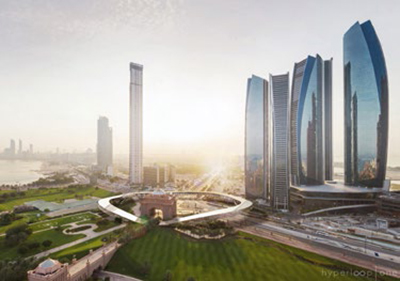 Rapid transportation systems are applicable to many markets across the world and have succeeded, as evidenced by Japan’s Shinkansen train system. We have already seen proof of concept of Hyperloop. The vision is for the hypersonic low-pressure tubes, elevated just meters off the ground, transporting pods floating on a layer of air and propelled by electromagnets, to run at speeds of 700-750 mph, breaking the barrier of sound at 767 mph. In the United Arab Emirates, Hyperloop will link Dubai and Abu Dhabi in just 12 minutes.27 Concept plans are also underway in the U.S. to link numerous cities such as L.A. to San Francisco in 30 minutes. Such systems could, in time, remake transit in other regions as well, as people are transported in pods at the speed of light. True to globalization, the concept already is spreading around the world. Musk’s SpaceX competition encouraged student teams to create viable hyperloop systems. City finalists for the proposed system are located on six continents, coming from cities that include: Boston; Ontario, CA; Houston; Seattle, Mexico City; Buenos Aires; Durban/ Johannesburg; Shanghai; Chennai; Mumbai; Tallin/ Helsinki; and London/Edinburgh.28
Rapid transportation systems are applicable to many markets across the world and have succeeded, as evidenced by Japan’s Shinkansen train system. We have already seen proof of concept of Hyperloop. The vision is for the hypersonic low-pressure tubes, elevated just meters off the ground, transporting pods floating on a layer of air and propelled by electromagnets, to run at speeds of 700-750 mph, breaking the barrier of sound at 767 mph. In the United Arab Emirates, Hyperloop will link Dubai and Abu Dhabi in just 12 minutes.27 Concept plans are also underway in the U.S. to link numerous cities such as L.A. to San Francisco in 30 minutes. Such systems could, in time, remake transit in other regions as well, as people are transported in pods at the speed of light. True to globalization, the concept already is spreading around the world. Musk’s SpaceX competition encouraged student teams to create viable hyperloop systems. City finalists for the proposed system are located on six continents, coming from cities that include: Boston; Ontario, CA; Houston; Seattle, Mexico City; Buenos Aires; Durban/ Johannesburg; Shanghai; Chennai; Mumbai; Tallin/ Helsinki; and London/Edinburgh.28
These systems could upend all real estate sectors, perhaps enabling industrial facilities to locate even farther away from major population areas. Rural areas could be revived as commuting to the city for work or entertainment becomes more viable and affordable. In a reverse commute, suburban office space could see an upswing as the pool of workers increases. Suburban malls may also become more attractive. Speed as a disrupter could possibly free up huge tracts of land and former regional airports for development, which will be less necessary as the Hyperloop could create easier connections than short flights.
Socialization
Despite the massive economic and business changes technology has continued to wreak on society, humans remain social animals. As technology enables people to be more isolated (working from home, experiencing high-quality entertainment in their living rooms with smart, big-screen televisions and the like) and it continues to transform the workplace environment, real estate owners and developers are finding ways to enhance social interaction among their tenants. Office buildings and multifamily developments are adding amenities to create opportunities
for social interaction. And technology itself is optimizing online experiences that are generating offline activities, strengthening the need for collaboration. A changing workforce and greater connectivity will force developers to build real estate around core hubs, and in fewer locations.29 Core locations will likely be the centers of greater investment as companies focus on value creation at incubators and innovation hubs.30 The influence of technology will fundamentally change the way occupiers view real estate and the way companies work. Technology will be
embedded into workplace strategy, sustainability and productivity.
As technology has increased worker productivity over the last decade, U.S. companies are now hiring temporary workers on an as-needed basis, creating a “gig economy” that has seen the number of people working outside the traditional employer/employee relationship rising from 10.1 percent in 2005 to 15.8 percent in 2015.31 Adding in the number of telecommuters, this new model has resulted in U.S. companies now leasing half as much space per new office worker than in previous expansions.32
The real estate marketplace, however, has adapted, especially for small start-up companies that seek affordable space and young entrepreneurs who desire to interact with colleagues and peers. We have seen the rise of innovative clusters and co-working spaces: WeWork, TechSpace, Industrious and Galvanize are expanding worldwide, growing 50 percent each year.33 “Shared office spaces are rapidly becoming more innovative and widespread; ‘virtual’ offices offer traditional amenities (receptionists, mailboxes, short-term desk space) to small businesses. As is often the case in periods of dynamic change, many will become more widely accepted elements in the general economy.”34
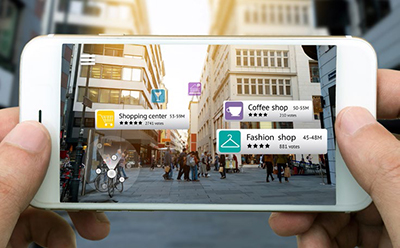 This can be seen in the more traditional office and multifamily buildings as well. Operators of older office units are investing in sustainability, open floor plans, better finishes (which often appeal to millennials), modern lighting and green spaces such as rooftop gardens. Multifamily units also must include indoor and outdoor common areas, coffee bars, communal grills and high-speed Internet in public areas to remain current. For those buildings with parking, electric car charging stations must be considered.
This can be seen in the more traditional office and multifamily buildings as well. Operators of older office units are investing in sustainability, open floor plans, better finishes (which often appeal to millennials), modern lighting and green spaces such as rooftop gardens. Multifamily units also must include indoor and outdoor common areas, coffee bars, communal grills and high-speed Internet in public areas to remain current. For those buildings with parking, electric car charging stations must be considered.
The key is to integrate the virtual and the physical, something seen in retail as stores move from brick and mortar to become omnichannel, and e-commerce companies invest in physical stores. But perhaps no businesses merge services better than Uber and LYFT, among other ride-sharing services. The online (virtual) order of a car becomes a traditional physical – and social – experience when the car arrives. Then there is bike sharing, which has required decades of reformulation in cities around the world (as seen in New York City, Minneapolis, Chicago, Denver and more, in addition to Santander Cycles in London and in Paris with the Vélib program), may reduce traffic congestion, but it will require reconfiguration of city streets for safety. An even more direct effect of accelerated technology is seen in the hospitality sector. Without owning a single property, Airbnb is now the largest hotel company in the world, with massive impacts on the hotel industry and quite possibly on student housing.35
Urbanization
Perhaps the greatest force accelerating change in commercial real estate is simply where people are choosing to live. Reversing more than 70 years of flight to the suburbs, the U.S. is now a majority urban population, with more than 80 percent of the population residing in urban areas, up from 51 percent in the 1920s and 66 percent in the 1960s.36 This trend will affect development, redevelopment and infrastructure for decades to come.
Populations have risen in major urban areas including Chicago, Philadelphia, San Francisco and New York City (which saw a gain for the first time in decades).37 But as housing prices skyrocket in these cities, they are leading to the development of mixed-used projects that create urban areas and experiences in suburban regions, and even selfcontained new neighborhoods within neglected areas in existing cities. This model appeals to potential millennial employees who wish to save commuting time and costs, and it increases socialization opportunities. Mixed-use development is taking place in outlying areas of major cities such as Miami, redeveloping neighborhoods in Boston, and smaller markets in the Midwest.
It should be noted urban infill is easier to develop than permitting land at city boundaries38, and this is resulting in more downtown redevelopment as well. Among the U.S. cities seeing significant downtown redevelopment/ gentrification are Detroit, Downtown Los Angeles, New York City’s Brooklyn, Downtown Houston and Uptown Dallas. Because of the costs of housing in these areas, and their generally young populations, housing tends toward rentals in these redevelopments, a boon to multifamily owners and investors.
But it’s not just the big cities that are benefiting. Another result of downtown redevelopment is the rise of 18-hour cities, defined as second-tier cities with urban population growth and a lower cost of living than gateway cities such as New York, Los Angeles, Chicago, San Francisco and Washington, D.C.39 Cities such as Austin, Denver and Nashville increasingly are providing the cultural amenities that appeal to millennials and boomers alike at a much lower cost of living, and at more affordable office space rates for the companies that employ them. These cities are attracting heightened interest of investors.40 Exponential change will require significant investment in physical and virtual infrastructure, from public transit to free high-speed Internet, to attract workers and residents.
 As technology brings social and organizational change, it is disrupting and transforming industries at a pace not seen since the industrial revolution. Quantum leaps in technology, the increasing role of Big Data, and the acquisition and application of intellectual capital will be critical driving forces. As changes take place, businesses and their innovators must stay agile, reinventing themselves to optimize their position in the marketplace.
As technology brings social and organizational change, it is disrupting and transforming industries at a pace not seen since the industrial revolution. Quantum leaps in technology, the increasing role of Big Data, and the acquisition and application of intellectual capital will be critical driving forces. As changes take place, businesses and their innovators must stay agile, reinventing themselves to optimize their position in the marketplace.
1 Richard Fry, “Millenials overtake Baby Boomers as America’s largest generation,” http://www.pewresearch.org/fact-tank/2016/04/25/millennials-overtake-baby-boomers/ (Pew Research Center April 25, 2016).
2 CBRE Research, “Millenials: Myths and Realities” (CBRE, Inc. 2016).
3 “Adapting the Retail Environment to Millennial Shoppers: A Generation Tied to Technology,” available at http://www.samsung.com/us/business/short-form/adapting-the-retail-environment-to-millennialshoppers/? CampaignCode=retail-industry-solutions-get-a-free-guide-on-how-to-adapt-retail-to-the-millennial-mindset-marquee-get-the-ebook&cid=smc-eb-own-0415-10001123
4 Nielsen, “Millennials Prefer Cities to Suburbs, Subways to Driveways,” http://www.nielsen.com/us/en/insights/news/2014/millennials-prefer-cities-to-suburbs-subways-to-driveways.html (March 3, 2014).
5 Fung Global Retail & Technology, “The Silver Series III: Technology for Mobility-Constrained Seniors,” https://fungglobalretailtech.com/research/silvers-series-iii-technology-mobility-constrained- seniors/
6 CRE, “The CRE 2016-2017 Top Ten Issues Affecting Real Estate,” https://www.cre.org/external-affairs/cre-2016-2017-top-ten-issues-affecting-real-estate/
7 Howard Berger, “Augmented and Virtual Reality - An Expanded Role in Commercial and Corporate Real Estate?,” https://www.realcomm.com/advisory/715/1/augmented-and-virtual-reality-an-expanded-role-in-commercial-and-corporate-real-estate
8 http://smartamerica.org/teams/smart-cities-usa/
9 https://arrayofthings.github.io/
10 Andrew J. Hawkins, “Alphabet’s Sidewalk Labs aims to transform 16 cities into tech-friendly laboratories: Here come the self-driving cars,” http://www.theverge.com/2016/10/18/13316500/sidewalk- labs-google-alphabet-smart-city-transportation (October 18, 2016).
12 Barry Lapides, “Virtual Reality and Augmented Reality - Showcasing the Real in Real Estate,” http://www.flabusinesslaw.com/real-estate/virtual-reality-and-augmented-reality-showcasing-the-real-in-real-estate/#page=1 (December 1, 2016)
13 Id.
14 Howard Berger, “Augmented and Virtual Reality - An Expanded Role in Commercial and Corporate Real Estate?,” https://www.realcomm.com/advisory/715/1/augmented-and-virtual-reality-an-expanded-role-in-commercial-and-corporate-real-estate
15 Id.
16 U.S. Green Building Council, “Buildings and Climate Change,” http://www.eesi.org/files/climate.pdf
17 CBRE Research, “Automated Technology: Driving Change in Real Estate” (CBRE 2017).
18 Ragnar Lifthrasir, President, IBREA, “What Is Blockchain And How Does It Apply To Real Estate?,” http://dukelong.com/what-is-blockchain-and-how-does-it-apply-to-real-estate-guest-post-ragnar-lifthrasir-president-ibrea/
19 Jason Ray, “Blockchain and CRE: It’s All About Speed To Transact!,” https://www.linkedin.com/pulse/blockchain-cre-its-all-speed-transact-jason-ray (Nov. 2, 2015).
20 Richard Fry, “Millenials overtake Baby Boomers as America’s largest generation,” http://www.pewresearch.org/fact-tank/2016/04/25/millennials-overtake-baby-boomers/ (Pew Research Center April 25, 2016).
21 JLL, Global Real Estate Transparency Index 2016, available at http://www.jll.com/GRETI (last visited March 15, 2017).
22 Id.
23 Id.
24 Jim Costello, senior vice president, Real Capital Analytics, “Cross-border Investment in U.S. Commercial Real Estate,” http://www.naiop.org/en/Magazine/2016/Spring-2016/Finance/Cross-border-Investment-in-US-Commercial--Real-Estate.aspx (NAIOP Spring, 2016).
25 Alexa Culver, “Prop-tech Predictions: the circular economy, big data, and the internet of (every)thing,” http://www.ashfords.co.uk/article/prop-tech-predictions-the-circular-economy-big-data-and-the-internet-of-every-thing ( Jan. 9, 2017)
26 Real Capital Analytics, 2017.
27 “500mph Hyperloop train will travel from Dubai to Abu Dhabi in 12 minutes,” The Telegraph, available at http://www.telegraph.co.uk/technology/2016/11/10/500mph-hyperloop-train-will-travel-from-dubai-to-abu-dhabi-in-12/ (November 2016).
28 “Hyperloop One Announces Semifinalists Of Its Global Challenge,” http://www.prnewswire.com/news-releases/hyperloop-one-announces-semifinalists-of-its-global-challenge-300387186.html (January 6, 2017).
29 Workspace, Reworked: Riding the Wave of Tech-Driven Change,” https://jll.turtl.co/story/57d80fbaba28b7e565271ddf.
30 JLL, “Workspace, reworked Ride the wave of tech driven change,” https://www.youtube.com/watch?v=uypvjj6reO0 (October 14, 2016).
31 Lawrence F. Katz and Alan B. Krueger, “The Rise and Nature of Alternative Work Arrangements in the United States, 1995-2015,” https://krueger.princeton.edu/sites/default/files/akrueger/files/katz_krueger_cws_-_march_29_20165.pdf (March 29, 2016).
32 Andrew Nelson, “The Gig Economy and Collaborative Space,” http://knowledge-leader.colliers.com/andrew-nelson/gig-economy-collaborative-space/.
33 Julie Littman, “Co-Working is Changing the Face of Office Around the World,” Bisnow.com (Nov. 30, 2016), available at https://www.bisnow.com/national/news/office/co-working-is-changing-the-face-ofoffice-all-around-world-68142
34 CRE, “The CRE 2016-2017 Top Ten Issues Affecting Real Estate,” https://www.cre.org/external-affairs/cre-2016-2017-top-ten-issues-affecting-real-estate/
35 Mike Kirby, Chairman & Director of Research, Green Street Advisors, “Heard on the Beach,” 2017 Disruptors in the Global Real Estate Market, Real Estate Capital Markets Conference (July 27, 2011)
36 U.S. Census, American Community Survey (2011).
37 Id.
38 CBRE Global Investors, “U.S. Urbanization Trends: Investment Implications for Commercial Real Estate,” http://www.cbreglobalinvestors.com/research/publications/Documents/Special%20ReportsUS%20Urbanization%20Trends_JAN%202015.pdf (January 2015).
39 Rebecca Lake, “Why 18-Hour Cities are the Next Big Thing For Real Estate Investors,” Investopedia.com (March 26, 2016).
40 Id.
About the Author
Linda J. Isaacson
SVP, Director of Business Intelligence, Data and Analytics
First American Title Insurance Company
National Commercial Services
Linda Isaacson has long been recognized as a compelling and authoritative voice in the title industry. She has authored a number of relevant, informative whitepapers for First American Title’s National Commercial Services Division and is a regular featured speaker for Urban Land Institute. She also serves as vice chair, membership of the Global Exchange Council for the organization. Linda has been recognized as one of Real Estate New York’s “Women of Influence” as well as Sokol Media’s “Top Woman in Real Estate.”
As director of business intelligence, data and analytics for First American Title, Linda focuses on developing critical market and competitive intelligence, trend analysis, predictive analytics and innovative research in both the debt and equity quadrants of the capital markets throughout the United States.

